Front Brake Caliper Replacement 1500 Series
Caution: Refer to Brake Dust Caution in the Preface section.
Caution: Refer to Brake Fluid Irritant Caution in the Preface section.
Removal Procedure
- Inspect the fluid level in the brake master cylinder reservoir.
- If the fluid level is midway between the maximum-full point, and the minimum allowable level, no fluid needs to be removed from the reservoir before proceeding.
- If the fluid level is higher than midway between the maximum-full point, and the minimum allowable level, remove fluid to the midway point before proceeding.
- Raise and support the vehicle. Refer to Lifting and Jacking the Vehicle .
- Remove the tire and wheel assembly. Refer to Tire and Wheel Removal and Installation .
- Compress the brake caliper pistons.
- Clean all dirt and foreign material from around the brake hose fitting.
- Remove the brake hose to caliper bolt.
- Remove and discard the 2 copper brake hose gaskets. These gaskets may be stuck to the caliper or the brake hose end.
- Remove the brake hose from the caliper.
- Remove the brake caliper bolts.
- Remove the caliper from the caliper bracket.
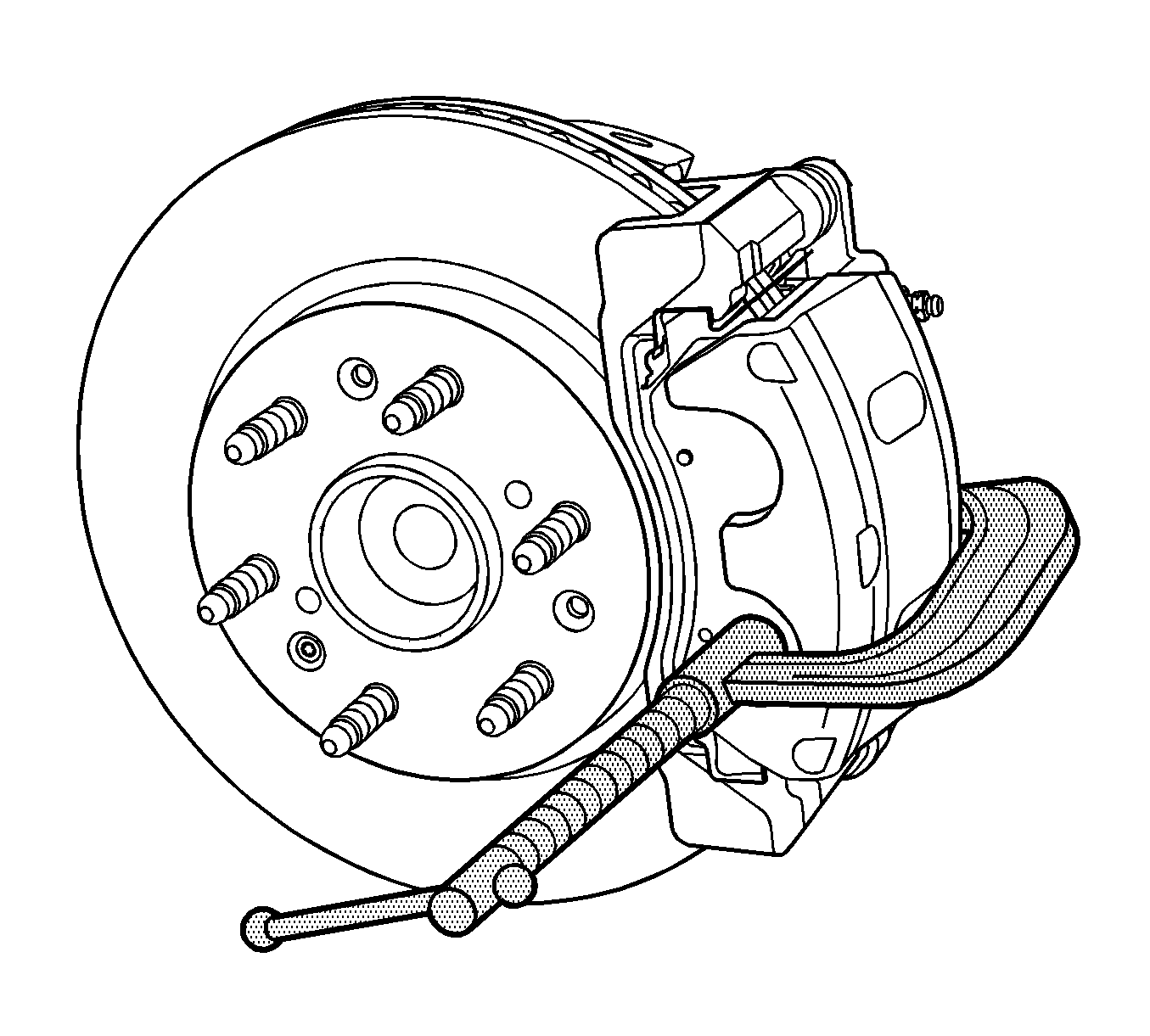
| 6.1. | Install 2 large C-clamps over the top of the caliper housing and against the back of the outboard pad. |
| 6.2. | Slowly tighten the C-clamps until the pistons are pushed completely into the caliper bores. |
| 6.3. | Remove the C-clamps from the caliper. |
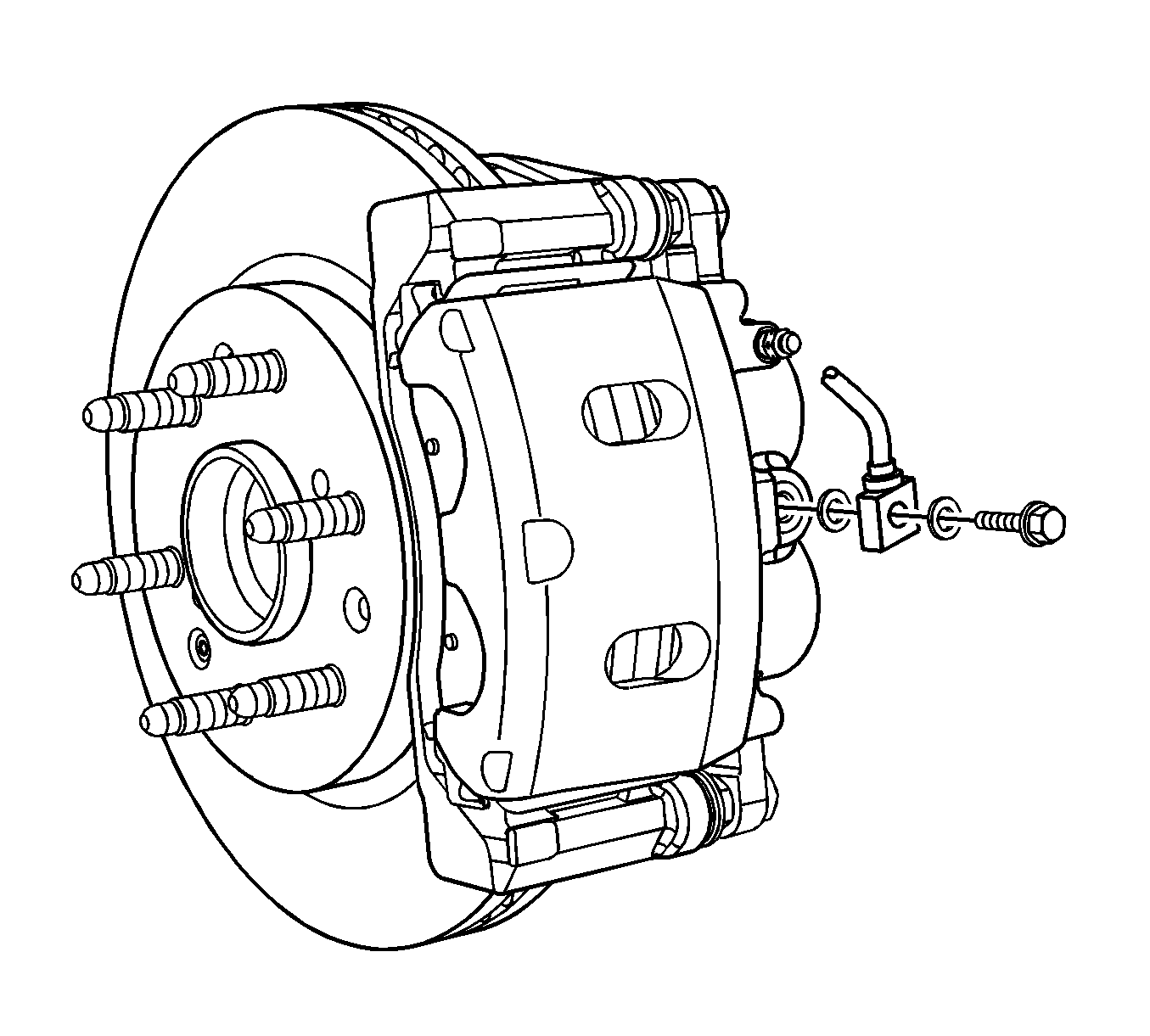
Important: Install a rubber cap or plug to the exposed brake pipe fitting end to prevent brake fluid loss and contamination.
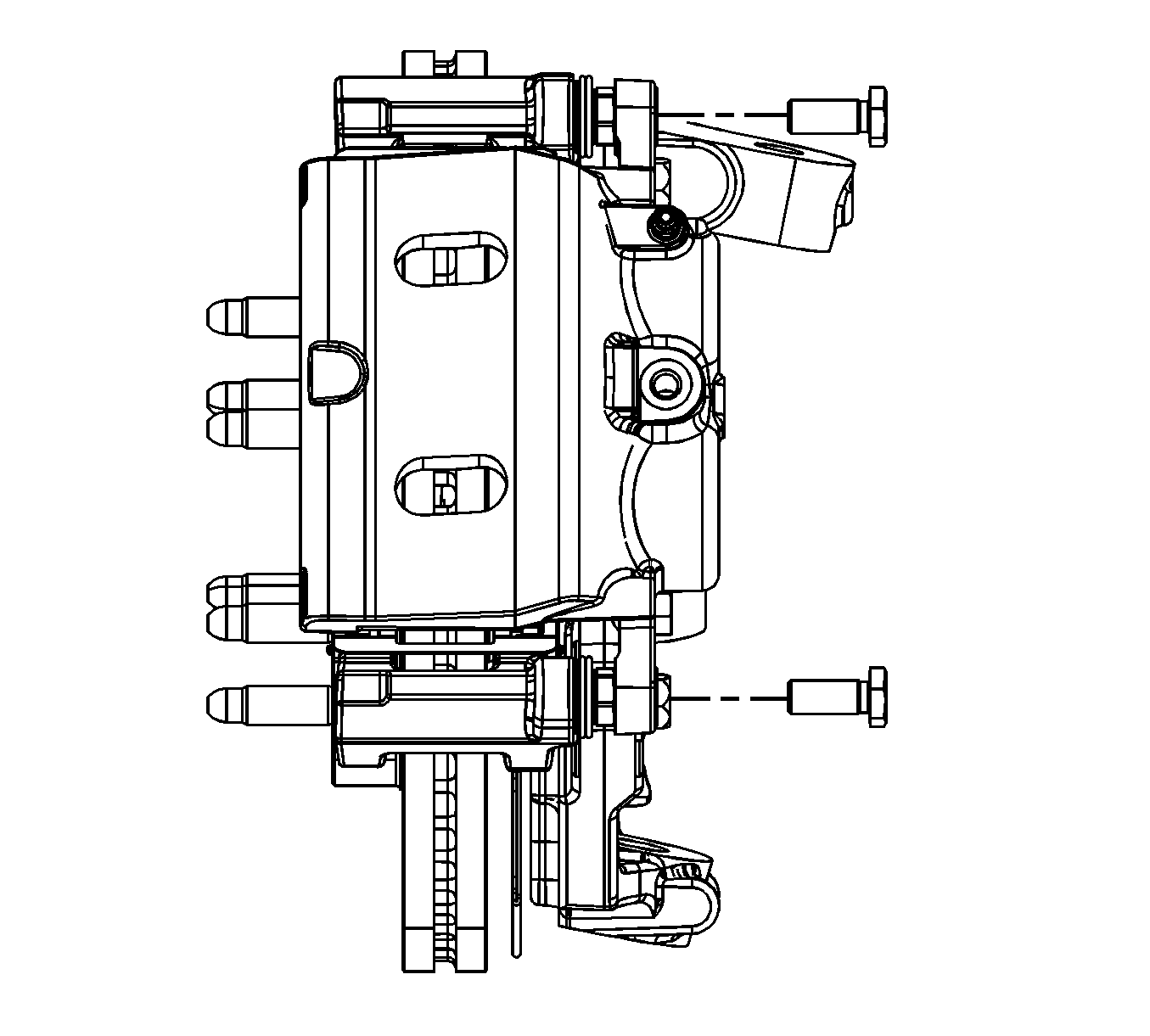
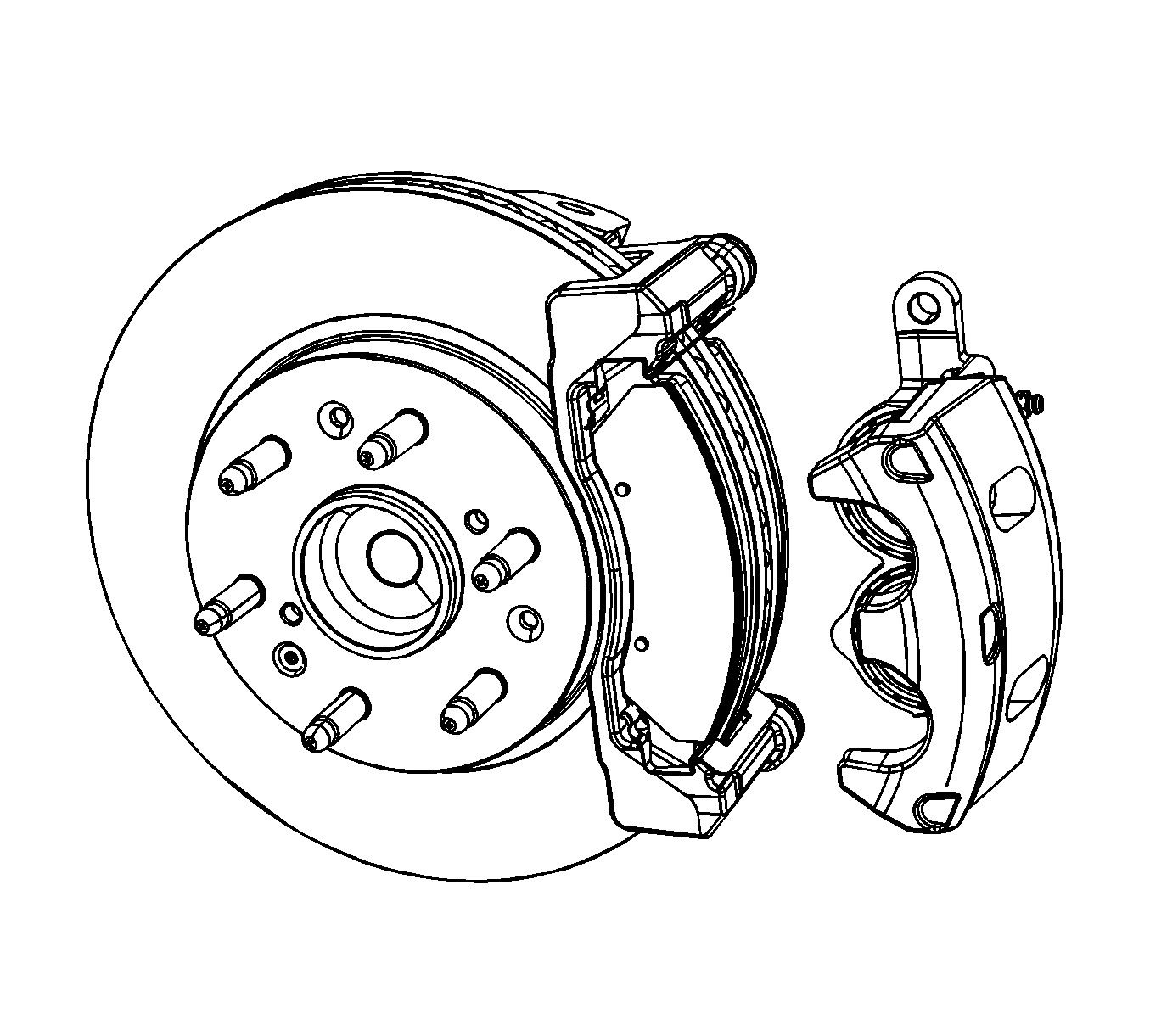
Caution: Do not depress the brake pedal with the brake rotors/calipers and/or the brake drums removed. Damage to the brake system may result. If brake system damage occurs and is not repaired, vehicle damage and/or personal injury or death may result.
Installation Procedure
- Install the caliper to the caliper bracket.
- Install the brake caliper bolts.
- Remove the rubber cap or plug from the exposed brake hose fitting end.
- Assemble 2 NEW copper brake hose gaskets to the brake hose bolt, and brake hose.
- Install the brake hose to caliper bolt.
- Bleed the hydraulic brake system. Refer to Hydraulic Brake System Bleeding .
- Install the tire and wheel assembly. Refer to Tire and Wheel Removal and Installation .
- Fill the master cylinder reservoir to the proper level with clean brake fluid, if necessary. Refer to Master Cylinder Reservoir Filling .

Notice: Refer to Fastener Notice in the Preface section.

Tighten
Tighten the bolts to 100 N·m (74 lb ft).

Tighten
Tighten the bolt to 40 N·m (30 lb ft).
Front Brake Caliper Replacement 2500 Series
Caution: Refer to Brake Dust Caution in the Preface section.
Caution: Refer to Brake Fluid Irritant Caution in the Preface section.
Removal Procedure
- Inspect the fluid level in the brake master cylinder reservoir.
- If the fluid level is midway between the maximum-full point, and the minimum allowable level, no fluid needs to be removed from the reservoir before proceeding.
- If the fluid level is higher than midway between the maximum-full point, and the minimum allowable level, remove fluid to the midway point before proceeding.
- Remove the tire and wheel assembly. Refer to Tire and Wheel Removal and Installation .
- Compress the brake caliper pistons.
- Clean all dirt and foreign material from around the brake hose fitting.
- Remove the brake hose to caliper bolt.
- Remove and discard the 2 copper brake hose gaskets. These gaskets may be stuck to the caliper or the brake hose end.
- Remove the brake hose from the caliper.
- Remove the brake caliper bolts.
- Remove the caliper from the caliper bracket.
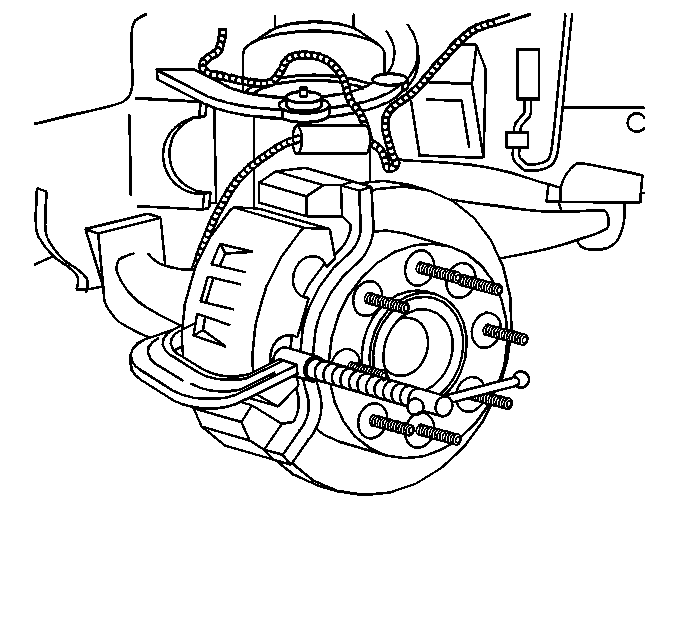
| 5.1. | Install 2 large C-clamps over the top of the caliper housing and against the back of the outboard pad. |
| 5.2. | Slowly tighten the C-clamps until the pistons are pushed completely into the caliper bores. |
| 5.3. | Remove the C-clamps from the caliper. |
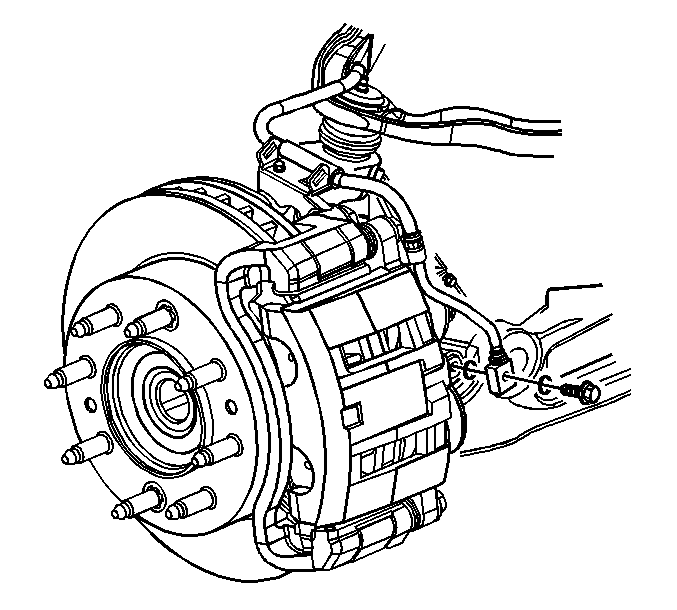
Important: Install a rubber cap or plug to the exposed brake pipe fitting end to prevent brake fluid loss and contamination.
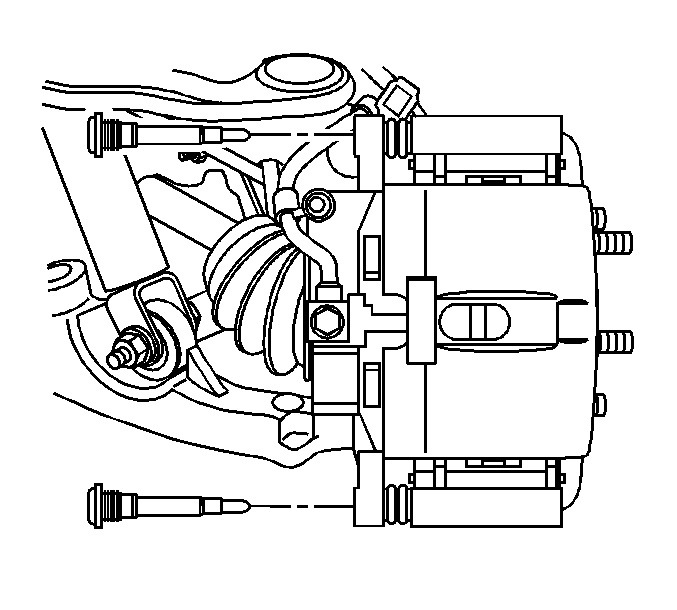
Caution: Do not depress the brake pedal with the brake rotors/calipers and/or the brake drums removed. Damage to the brake system may result. If brake system damage occurs and is not repaired, vehicle damage and/or personal injury or death may result.
Installation Procedure
- Install the caliper to the caliper bracket.
- Install the brake caliper bolts.
- Remove the rubber cap or plug from the exposed brake hose fitting end.
- Assemble the 2 NEW copper brake hose gaskets to the brake hose caliper bolt and the brake hose.
- Install the brake hose to caliper bolt.
- Bleed the hydraulic brake system. Refer to Hydraulic Brake System Bleeding .
- Install the tire and wheel assembly. Refer to Tire and Wheel Removal and Installation .
- Fill the master cylinder reservoir to the proper level with clean brake fluid, if necessary. Refer to Master Cylinder Reservoir Filling .

Notice: Use the correct fastener in the correct location. Replacement fasteners must be the correct part number for that application. Fasteners requiring replacement or fasteners requiring the use of thread locking compound or sealant are identified in the service procedure. Do not use paints, lubricants, or corrosion inhibitors on fasteners or fastener joint surfaces unless specified. These coatings affect fastener torque and joint clamping force and may damage the fastener. Use the correct tightening sequence and specifications when installing fasteners in order to avoid damage to parts and systems.
Tighten
Tighten the bolts to 108 N·m (80 lb ft).

Important: Install 2 NEW copper brake hose gaskets.
Tighten
Tighten the bolt to 40 N·m (30 lb ft).
